World Cup XI – Foreigners in their own country
GK Fernando Muslera (URU) – Buenos Aires, Argentina – 27, Galatasaray (60 caps)
RB Gotoku Sakai (JAP) – New York, USA – 23, VFB Stuttgart (8 caps)
CB Pepe (POR) – Marceio, Brazil – 31, Real Madrid (57 caps, 3 goals)
CB Bruno Martins Indi (HOL) – Barreiro, Portugal – 22, Feyenoord (14 caps, 2 goals)
LB Jeffrey Schlupp (GHA) – Hamburg, Germany – 21, Leicester City (1 cap)
RM Raheem Sterling (ENG) – Kingston, Jamaica – 19, Liverpool (2 caps)
CM Jonathon De Guzman (HOL) – Ontario, Canada – 26, Villareal (8 caps)
CM Kevin Prince Boateng (GHA) – Berlin, Germany – 27, Schalke (11 caps, 2 goals)
LM Lukas Podolski (GER) – Gliwice, Poland – 29, Arsenal (112 caps, 46 goals)
FW Diego Costa (SPA) – Lagarto, Brazil, 25 - Atletico Madrid (1 cap)
FW Peter Odemwingie (NIG) – Taskent, Uzbekistan – 32, Stoke City (55 caps, 9 goals)
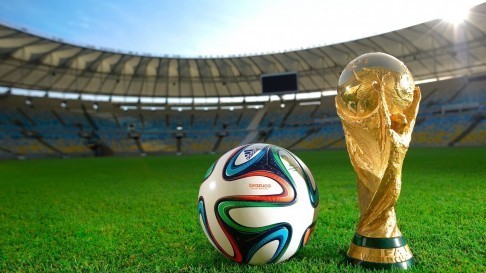
Other players.
RM Panagiotis Kone (GRE) – Tirana, Albania – 26, Bologna (14 caps)
CM Thiago Motta (ITA) - Sao Bernardo do Campo, Brazil – 31, PSG (19 caps, 1 goal)
RB Anthony Vanden Borre (BEL) – Likasi, Zaire – 26, Anderlect (24 caps, 1 goal)
CB Johan Djourou (SWI) – Abidjan, Ivory Coast – 27, SV Hamburg (43 caps, 1 goal)
CB John Brooks (USA) – Berlin, Germany – 21, Hertha Berlin (3 caps)
CM Sammir (CRO) – Itabuna, Brazil – 27, Getafe (4 caps)
The transfer market can be a cruel, auspicious place where the affluent and opulent thrive and the poor scrape to survive. In this day and age, even international football can feel the scrupulous burden as nations jockey to best equip their sides for their patriotic people.
It’s fair to say FIFA’s rules aren’t as stringent as they once were. To cut a potentially long story short, after the age of 18, a player could in theory go and live in any country they wanted, and after five years, assuming they take up citizenship with that country, they would be eligible to represent them. Anyone.
The easier route is to have family ties to a certain country. These ties can stretch to paternal grandparents, and if they or the player’s parents hold nationalities elsewhere other than that of their birth, they could also play for that nation.
Even if a player has already played a friendly match for a certain nation – no problem. Providing that before their 21st birthday they haven’t played a competitive game then it’s no harm done.
Traditionally, these rules will rely on the integrity of the nations to pick practically and a players desire to play for his country of birth. Over the last couple of decades, countries have started taking advantage of these bylaws to strengthen their sides. Brazilians have popped up all over the place, even breaking into strong sides as with Deco (Portugal), Cacau (Germany) and Alex (Japan) who have garnered 180 caps between them for their adopted countries.
Every player has a different story. Some move from their country of birth at a young age whereas others simply don’t think their home nation, which is traditionally a top one like Brazil, will ever cap them, so they accept the next best option.
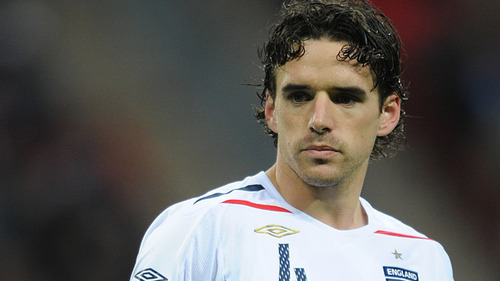
To some, it’s just a personal preference. Owen Hargreaves could have picked Wales, England, Canada or Germany when deciding his international future. For some reason, the injury plagued midfielder picked the Three Lions, a country which he had never set foot in before.
After being subject of the boo-boys initially, Hargreaves industry and sheer determination whilst in the white of England won fans over, and he even went on to be named England player of the year in 2006 in addition to England’s best player at the 2006 World Cup.
Fast-forward to today, and Diego Costa is the new man jumping ship and making the headlines. We decided to take a look at a team of players who will be representing their adopted homes this summer and try to understand their reasons a little better.
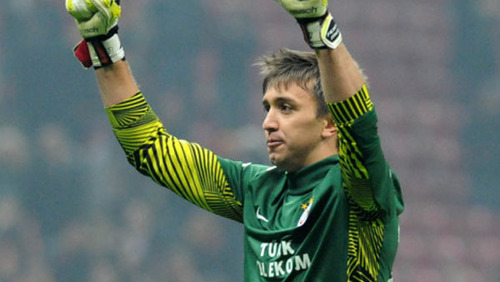
Fernando Muslera – England are faced with the task of beating an Argentinean in the sticks if they hope to get past Uruguay this summer. Argentina really doesn’t want us to win do they?
The 27-year-old Galatassary shot-stopper will be looking to add to his 60 caps this summer despite originally hailing from Buenos Aires. Both of Muslera’s parents are Uruguyan, and whilst it’s not clear why his safe hands were conceived in Argentina, he returned there shortly after his birth.
After impressing for Uruguayan giants C.F. Nacional whilst on loan, he managed to turn heads in Europe which led to a switch to Serie A side Lazio. After over 100 appearances in all competitions in Rome, Galatasaray procured his services for a believed fee of around €12m.
Did you know? – Muslera was ranked the sixth best keeper on the planet in 2011 by the International Federation of Football History & Statistics.
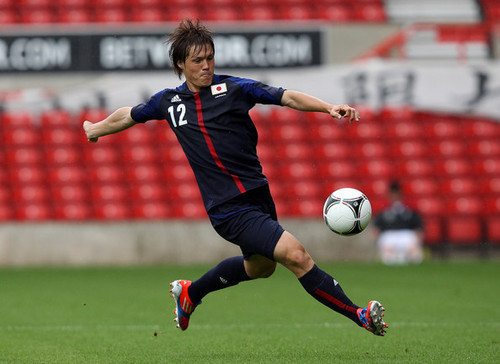
Gotoku Sakai – Japan and America haven’t always been the closest of friends, but Japan will be grateful to America for playing host to the birth of this flying full-back.
Sakai was born in New York City to a Japanese father and a German mother, who decided to migrate back to Niigata, Japan when their son was two years of age. The adventurous full-back would go on to play for local club Albirex Niigata and worked his way up through his home town clubs ranks.
In 2012, VFB Stuttgart took an interest in the now 23-year-old and signed him on loan before making the deal permanent a year later. Sakai has 8 caps to his name currently and will compete in his first major tournament since the Olympics in London back in 2012.
Did you know? – Sakai was featured in influential football website IBWM’s (In bed with Maradonna) list of 100 most exciting young players in world football 2013, alongside names like Neymar, Paul Pogba and Julian Draxler.
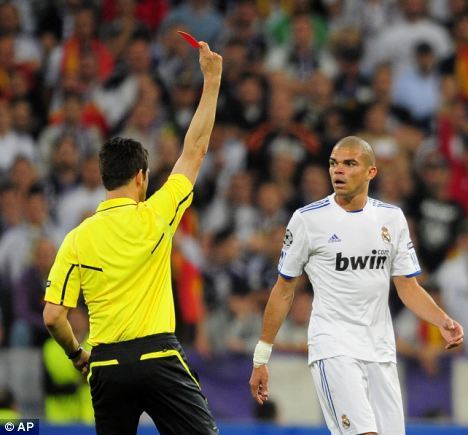
Pepe – The forever calm and composed Pepe spent the first 18 years of his life in his native Brazil before packing his bags to try his luck at a career in Portugal with his friend.
Though his friend, Ezequias, enjoyed the mildest of success, the 6”2 centre-back was a hit. Three years at Maritimo led to three very prosperous years at Porto which resulted in a €30 switch to arguably the biggest club in the world in Real Madrid. Not a bad call by Pepe then.
Pepe has 13 honours to his name in his career, as well as making the ‘Euro team of the tournament’ in both 2008 and 2012 for Portugal. The aggressive Real Madrid stopper has acquired 57 caps in his career after making his debut against Finland.
Did you know? – Back in 2006, then Brazil boss Dunga contacted Pepe to try and secure him for his birth nation. Pepe however, rebuffed his advances and declared he would turn out for Portugal upon being granted Portuguese citizenship – which he duly did.
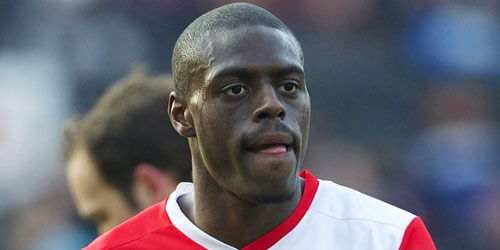
Bruno Martins Indi – The tough-tackling 20-year-old broke through into the Feyenoord first-team in 2010 and hasn’t looked back since, racking up 102 league appearances and 14 caps for the Oranje. Although Portugal have secured imports like Liédson and indeed Pepe to their ranks in recent years, Martins Indi will go down as one that got away.
The commanding defender, who can operate at left-back or in the centre, has emerged as a transfer target for Manchester United since Louis Van Gaal’s appointment at Old Trafford. The Dutch have been desperately seeking a powerful force to aid the spine of their defence ever since Jaap Stam’s retirement after Euro 2004, and Martins Indi has been touted as a defender who ”could be Oranje's first-choice left-back for the next 10 years,” by Feyenoord boss Ronald Koeman. He wasn’t a bad defender by the way.
Did you know? – Martins Indi only spent 10 months in Portugal before his parents decided to head for Holland, yet owns a dual passport.
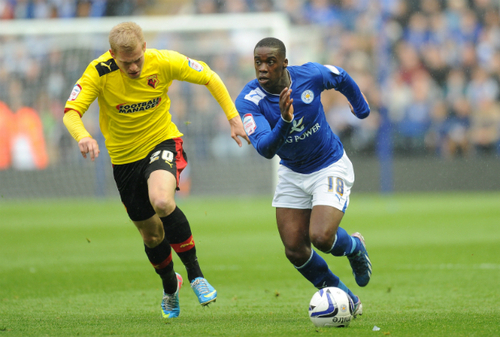
Jeffrey Schlupp – The rapid left-sider moved to England in time to attend secondary school in Milton Keynes after spending his youth in Hamburg, Germany. Schlupp joined the Leicester academy in 2005, aged 12, and went on to make his debut in 2010 where he scored a hat trick against Rotherham. Some impression.
Schlupp started out as a striker but began to establish himself on the left-side of the Foxes XI. At 21 years of age, Schlupp has settled in at left back and appears to be in serious contention for a starting berth this summer in Brazil. Schlupp was called up to Germany’s U19 side on one occasion, but didn’t make an appearance. Due to his Ghanaian parents, Schlupp was able to make his debut for the Black Stars last November against Gabon to add to an exceptional year for the versatile youngster, where he also won the Championship with Leicester.
Did you know? –Schlupp spent January 2013 on trial with Manchester United and featured in several U21 games. Despite Sir Alex Ferguson’s initial interest being a compliment in itself, the spell didn’t materialise into a move.
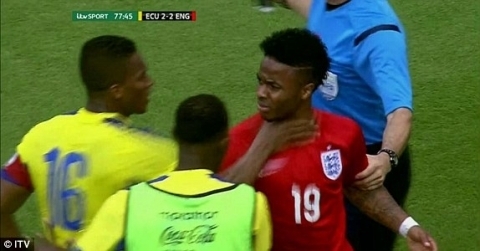
Raheem Sterling – Liverpool’s flying winger was just five years old when he left Maverley, Jamaica where his grandmother had been raising him. After swapping for the Caribbean for London, he and his mother built a life in the nation’s capital, which led to Sterling signing academy forms with Queens Park Rangers. Liverpool shelled out £600,000 for the tricky wide man at 15, and in March 2012 then Liverpool boss, now England boss Roy Hodgson, handed him his Liverpool debut aged 17 years and 107 days.
Hodgson also handed Sterling his first England nod, though he was an undeniable pick for the plane this summer after a stellar season at Anfield. Sterling, not 20 till December, was a major catalyst behind Liverpool’s resurgence to Premier League title contenders and will be seen as a sure-fire starter in many eyes.
Did you know? – Contrary to Internet rumours of multiple children with different women, Sterling only has one daughter named Melody Rose. She was born when Sterling was 17-years-old.
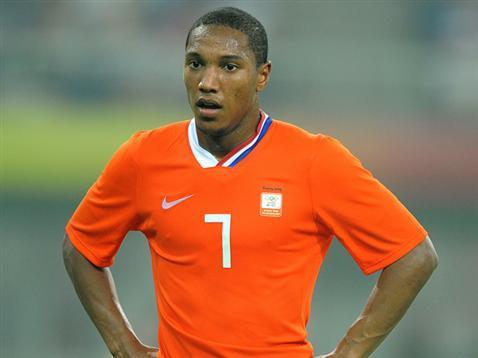
Jonathan De Guzman – Swansea loanee De Guzman spent the first 12 years of his life in Canada with his Phillipino father and Jamaican mother. Quite the mixed bag, De Guzman would join Feyenoord’s youth team in 1999, and by 2008 when he had become a firm fixture in the starting XI, De Guzman was granted Dutch citizenship.
Controversially, whilst De Guzman’s international future was still up in the air, he appeared on a Canadian talk show the very week before being granted Dutch citizenship, claiming he hadn’t decided his international future and wanted to concentrate on his club football. I think what he was trying to say was, the Dutch government hadn’t decided his international future yet. After spells in Spain with both Mallorca and then Villareal, the Ontorio-born star has enjoyed the last two seasons on loan at the Liberty Stadium becoming a firm fan favourite.
Did you know? – De Guzman has a brother who is also a professional footballer, Julian. He has 70 caps for Canada and currently plies his trade for Xanthi in Greece. These are the first of two sets of brothers to represent different countries on our list.
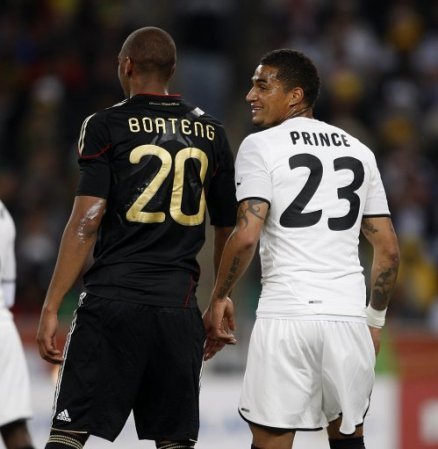
Kevin Prince Boateng – And rather promptly here is the one half of the second set of brothers in the team. Kevin’s brother, Bayern Munich’s Jerome, has amassed 37 caps for Germany as opposed to older brother Kevin, who chose to follow in his uncle Robert Boateng’s footsteps and represent Ghana. Rather reminds me of Christian and Max Vieri who played for Italy and Australia respectively.
Though capped at German U21 level, its alleged Boateng believed that following a debilitating tackle on Michael Ballack, the German FA were unlikely to ever select him. So despite making Ghana feel incredibly second best, they offered him a place in their squad for the 2010 World Cup to which he duly obliged. Coincidently, the box-to-box Schalke man faced off against Germany and his brother Jerome at the tournament. You couldn’t write it eh?
Did you know? – Boateng actually retired from international football in November 2011, aged 24, citing fatigue from the copious amounts of travelling it required. In October 2013, Boateng reversed his decision and went on to score the winning goal that sent Ghana to the World Cup finals, at the expense of Egypt.
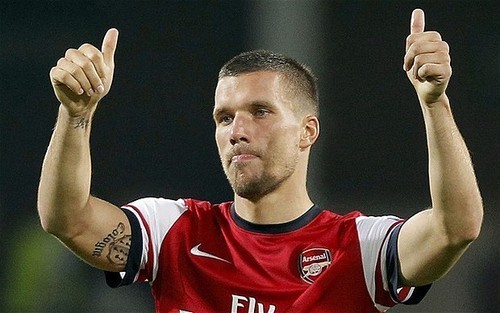
Lukas Podolski – Podolski sneaks on this list by virtue of a technicality, in a way. Though he was born in Gliwice, which is definitely in Poland, it was actually a city in Germany until 1945. After WW2, and before Podolski’s birth, it became part of Poland and that is where Podolski resided until he was two-years-old. Consider yourself a history buff, go on.
112 caps later, the former Koln and Bayern Munich man is third in the table for most German caps ahead of heroes like Michael Ballack and Jurgen Klinsmen – and he’s only turning 29 in June. Interestingly, second in the table is Miroslav Klose, another Polish-born forward. Podolski now operates from Arsenal’s left hand side and should be credited for his contribution to the run-in of the Gunners season.
Did you know? – Back in 2008, Podolski scored against his birth nation Poland in a 2-0 win for Germany. Podolski claims they were never interested in him until he played for Germany U21’s, which helped him make his decision.
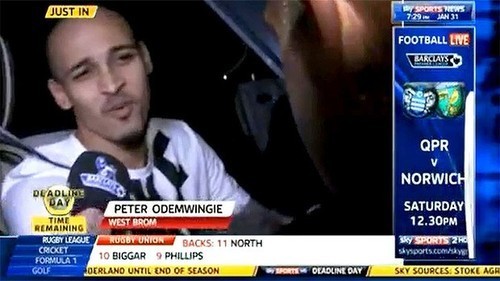
Peter Odemwingie – Stoke striker Odemwingie was actually born in Uzbekistan, which was a part of the Soviet Union at the time. At two-years-old, the pacey front-man moved to Nigeria with his Nigerian father of the same name, and his Russian mother. The car-park lurker would however head to Russia in time for his secondary school education, staying there till the age of 17 where he was a part of CSKA Moscow’s youth team.
Upon finishing his studies, Odemwingie returned to Nigeria and proceeded to bang the goals in for Nigerian Premier League side Bendel Insurance. His prolific exploits took him to Belgium and France before once again returning to Russia, signing for Lokomotiv Moscow for just over £8m.He netted 21 times in 75 games before heading to the Premier League for West Brom, and later Cardiff and Stoke.
Did you know? – Odemwingie had a trial for Blackburn Rovers in 2004 whilst plying his trade for Belgian side La Louviere. Then boss Graeme Souness rejected the chance to sign the forward after taking two separate looks at him. Rovers went on to finish 15th that season, and Odemwingie played Champions League football with Lille. Smart decision.
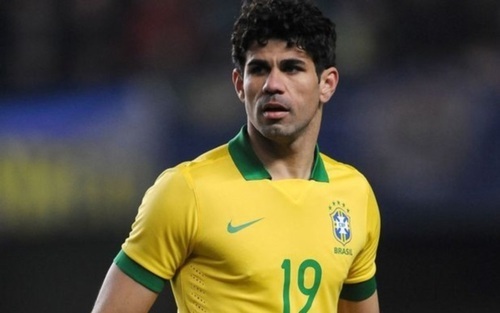
Diego Costa – Here’s an interesting one. The Atletico Madrid goal machine made his Brazil debut in March 2013, and won two caps in friendlies for the famous yellow and green. However, upon being granted Spanish citizenship in the summer of that year the Spanish FA applied to FIFA to have Diego Costa play for them. In February 2014, sure enough, Costa turned out for Spain against Italy.
Incredible really. Costa has turned down the chance to represent his homeland at a World Cup they’re hosting. Sounds like every kids dream, but the Brazilian FA have suggested Costa’s actions might be financially motivated and are insulted by this flagrant snub. It will be interesting to see how the Brazilian fans take to Costa this summer, if their reaction is anything like Luis Filipe Scolari’s, then it will be hostile, at best.
Did you know? – Costa isn’t the first player to perform this kind of U-turn. Ferenc Puskas famously played for Hungary but also represented Spain and his former Real Madrid teammate Alfredo Di Stefano starred for Argentina, Colombia and Spain. Seems Spain have a little history with this sort of thing doesn’t it.



